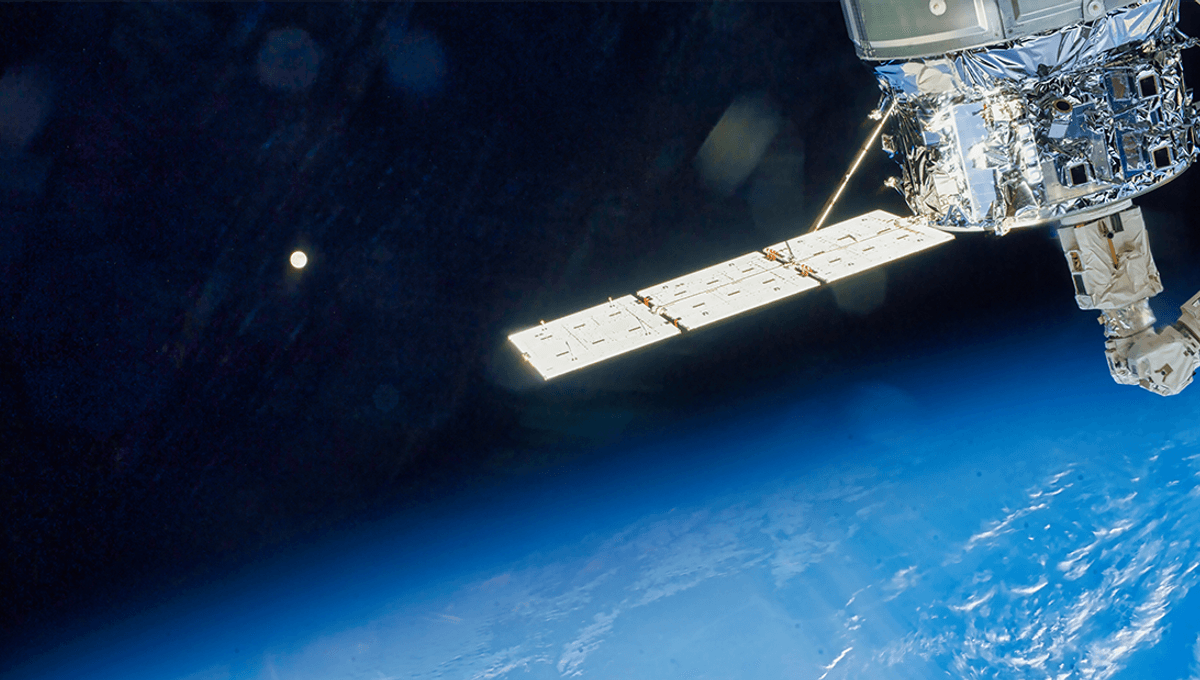
OpenAI’s large language model (LLM) ChatGPT is surprisingly good at piloting spacecraft, according to a team that trained it to participate in a simulated spaceflight competition, coming in second place.
In 2015, Mexican games studio Squad created the surprise hit video game Kerbal Space Program. In the space flight simulation game, you play a group of aliens in control of the alien equivalent of NASA. You must design and construct your spacecraft, before attempting to escape the atmosphere of planet Kerbin and head to other celestial bodies.
The game features pseudorealistic orbital physics, which, while not perfect, allows players to perform some pretty cool maneuvers, such as Hohmann transfer orbits, used to transfer a spacecraft between two different orbits.
“Though a spacecraft could follow a variety of curved paths from Earth to Mars, one path called the Hohmann transfer orbit uses the least energy and is thereby considered to be the most efficient,” NASA explains of the maneuver.
“The Hohmann transfer is an elliptical orbit with the sun at one focus of the ellipse that intersects the orbit of the target planet. Launch occurs when Earth is at Hohmann perihelion (the point of the Hohmann orbit that is closest to the sun). Arrival occurs when Mars is at Hohmann aphelion (the point of the Hohmann orbit that is farthest from the sun). Depending on mission objectives and spacecraft characteristics, engineers will use variations on the Hohmann transfer orbit to get spacecraft to Mars. These variations can make travel time more or less lengthy than a standard Hohmann transfer.”
The physics, while good enough for some to propose using it to teach math and physics, can be made more realistic with further mods.
“Although KSP does not offer a perfect simulation of reality, it has been praised for its accurate orbital mechanics, even forming a partnership with NASA that elevated its status beyond just a game,” the team explains in their paper.
“The simulation environment is constrained to a two-body problem and is limited to a small number of planets, most commonly just an earth-shaped planet called Kerbin.”
More recently, researchers have created the Kerbal Space Program Differential Games (KSPDG) challenge, in which teams compete in the game using autonomous artificial intelligence (AI) agents to control their space program.
“Participants will develop autonomous agents for maneuvering satellites engaged in non-cooperative space operations (pursuit of an evasive satellite, multi-satellite proximity operations, etc.),” the organizers explained ahead of the 2025 competition. “Participants are encouraged to use a range of technologies (reinforcement learning, optimal control, game theoretical techniques, etc.) to develop algorithms for autonomous control of spacecraft.”
The team opted to train LLMs for the task, and see how they performed.
“Historically, spacecraft Guidance, Navigation, and Control (GNC) systems have relied on classical control methods like Proportional-Integral-Derivative (PID) control, Linear Quadratic Regulators (LQR), and more advanced techniques such as Model Predictive Control (MPC) and robust control,” the team explains.
“While these methods have ensured reliable spacecraft operations, they often require extensive tuning and precise dynamic modeling. AI and machine learning, particularly Reinforcement Learning (RL), have emerged as promising alternatives, offering more adaptive solutions that optimize control policies through environmental interaction, with notable examples including agents trained for tasks such as sensor-tasking and planetary landing.”
The team found that the KSPDG environment was unsuitable for reinforcement learning. Instead, they developed a system to translate the game’s telemetry data into language that the LLMs can decipher and make decisions around. The LLM then relays its decision in text form, which is then put back into KSPDG to control the Kerbals’ actions.
However, given AI’s questionable math skills, the team had to do a little extra work to get the results that they did.
“Basic prompt engineering does not address the arithmetic limitations of LLMs when handling large numbers,” they explain. “Performing prompt augmentation, we enhance the observation space by computing the prograde vector to help the model achieve its mission.”
While the team placed second in the competition, losing out to a team that took a differential equation approach, they were pretty pleased with the results and believe that they could be improved further using reinforcement learning techniques.
“In future work, while our results indicate that RL is not a suitable alternative in this specific scenario, we aim to explore the potential benefits of integrating both approaches to enhance overall performance,” they conclude. “However, it is important to note that the simulation environment used in this study is designed for test-time computation and is not conducive to on-policy learning methods.”
The study is published in Advances in Space Research.
Source Link: ChatGPT May Be Surprisingly Good At Piloting Spacecraft, Taking 2nd Place In Spaceflight Competition